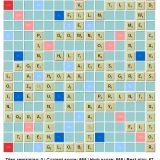Patrick of Ireland (c. 389 – 463)
 Around the year 389, a boy named Sucat was born to a Christian couple in northern Britannia (part of modern Scotland). Despite his parents’ zealous faith, the boy grew up to be a rebellious youth. One day, as Sucat was playing near the seashore, he was kidnapped by Irish pirates and sold to the pagan chieftain of an Irish Clan, who sent him to the fields to keep swine.
Around the year 389, a boy named Sucat was born to a Christian couple in northern Britannia (part of modern Scotland). Despite his parents’ zealous faith, the boy grew up to be a rebellious youth. One day, as Sucat was playing near the seashore, he was kidnapped by Irish pirates and sold to the pagan chieftain of an Irish Clan, who sent him to the fields to keep swine.
There, God convicted him of his sin of unbelief, and Sucat put his trust in the Savior. Later he wrote:
I was sixteen years old and knew not the true God; but in that strange land the Lord opened my unbelieving eyes, and, altogether late, I called my sins to mind, and was converted with my whole heart to the Lord my God, who regarded my low estate, had pity on my youth and ignorance, and consoled me as a father consoles his children.
Sucat eventually escaped his captors and returned to his family, but he could not forget the pagan Irish People. Changing his name to Patrick, he resolved to return to Ireland as a missionary. In his lifetime, Patrick preached to multitudes of Irishmen, and thousands were converted to Christ. According to legend, he used the shamrock ( a national symbol of Ireland) as an illustration of the Trinity. He also fought against the wicked Druids, a cult of pagan sorcerers who tried to mislead Celtic peoples.
Following Patrick’s death around 463, Ireland became the home of missionary-minded monasticism that preserved a knowledge of the Greek language when it was all but lost in the West. Irish missionaries also carried the gospel and Christian culture to must of Western Europe. Although the Roman church later claimed Patrick as her own, calling him “Saint Patrick” and “the patron saint of Ireland,” Patrick had no connection with the Roman church or the Pope. In fact, Romanism was not even introduced to the British Isles until the seventh century.
from World History and Cultures, 1997















